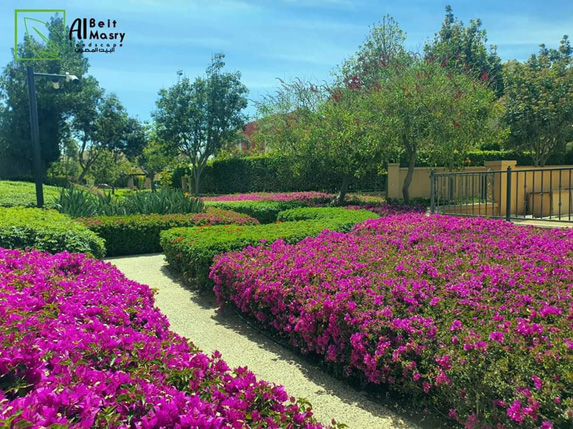Garden Landscaping: Softscape and Hardscape Elements

Gardens have been an essential part of human life since ancient times, providing a natural environment that offers a sense of relaxation and peace. Garden landscaping is a scientific and artistic practice that combines selecting appropriate plants and arranging them in harmony with the surrounding environment, alongside the use of hard elements like pathways, furniture, and fountains. The goal of this art is to enhance outdoor spaces, whether public or private, creating a harmonious and attractive environment that blends beauty and function.
Introduction:
Garden landscaping is an art that combines science and beauty to create complete and stunning outdoor spaces. Designing the perfect garden relies on various elements known in the landscaping field as Softscape and Hardscape, which together achieve a balanced outdoor environment in terms of functionality and aesthetics.
Landscape Elements:
-
Softscape:
Softscape refers to all the living and plant-based elements of a garden. These elements bring life and color to the space and range from trees and shrubs to flowers and lawns. Softscape is the dynamic and changeable part of garden design, as plants can be rearranged according to seasonal changes.
Examples of Softscape Elements:
- Trees: Provide shade and structure.
- Shrubs: Enhance privacy and create visual focal points.
- Flowers: Add color and vibrancy.
- Lawns: Offer a natural and relaxing feel.
-
Hardscape:
Hardscape includes all non-living elements in the garden. These elements help create structure and design for the space, providing a foundation for various functions such as pathways, seating areas, and retaining walls. Solid materials like stone, wood, and metal are often used to add a distinctive character to the design.
Examples of Hardscape Elements:
- Pathways: Guide foot traffic and define different areas of the garden.
- Retaining Walls: Used to define different levels or support terrain.
- Fountains: Add a unique water feature.
- Outdoor Furniture: Provides spaces for relaxation and enjoyment.
Balance Between Softscape and Hardscape:
To achieve a successful garden design, a balance between Softscape and Hardscape is essential. Plant elements bring natural beauty and comfort, while solid elements define the functional and aesthetic structure of the space.
In conclusion, garden landscaping is not merely a random arrangement of plant and hardscape elements, but a thoughtful design process that seeks to balance nature and human needs. By carefully selecting and arranging elements to meet aesthetic and functional requirements, any outdoor space can be transformed into a beautiful and tranquil oasis. Landscaping is an art that brings a touch of nature into daily life, making it more vibrant and serene.
